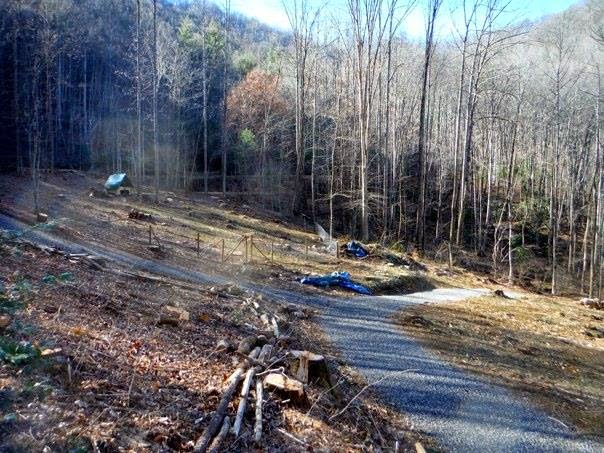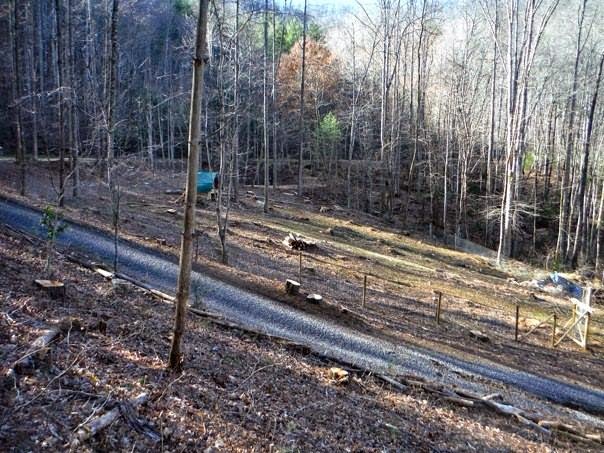I took Angus to a parking lot on campus last week, a big, empty one with lots of space and a track-like oval. This week, I took Abel to an actual track, the "Mellowdrome" in Asheville, where ten years ago I was heavily into racing.
Here are some pictures...
ANGUS, crossing our imaginary finish line. He and I held a "training camp" in the HHS auxiliary parking lot while Abel was in Art Camp. He learned how to pedal uphill in fast little circles instead of crushing up and down on the pedals inefficiently, he learned how to coast downhill with his feet off of the pedals, he learned to start on his own facing uphill, and he learned that pain is weakness, leaving the body. We even sang songs about conquering the headwind, climbing the hill, and coasting:
Took Abel to the Mellowdrome, where he rode 15 miles! He learned to look over his shoulder before moving up or down track, and how to hold a pretty straight, predictable line. Kept him just to the right of the stayer's line, and about 6 or 7 times I'd drop into the sprinter's lane to get in fast laps (43 seconds wasn't too fast, but I was in a 66" gear and it was windy, so hey) while he held me off. From the finish line around, he'd make it all the way around about 600 meters before I'd catch him, forcing me to do a whole kilo (2 laps) and then some. Not bad for a 9yo kid!
149: Coldholler lumber for Angus's kindergarten project
Today, we used the Coldholler blog for educational purposes -- Angus's class needed a bench of sorts, about a foot high, 6 feet long, and two feet deep, to help smaller kids reach the SmartBoard.
I used wood from our logging operation, big trees grown here. I preassembled it, making all the cuts and using thick slabs of white pine for the sides and legs and a thinner, pretty length of poplar for the top. It came together using decking screws, but half of the top was pre-drilled for wooden pegs so that it could be removed to access storage.
The kids helped carry it in from the truck, forming two long lines, one on each side. I talked about counting 100 rings on several stumps, and told them that means our trees are a century old. Showed them this post, portraying trees before they were cut, and this one, showing them stacked at the sawmill yard, and this one, showing how they get cut into boards.
Then, we used homemade mallets to pound in the pegs, pre-cut in 2" lengths from a 1/2-inch-diameter dowel. Each kid got to pound in a peg or apply wood glue.
Local products, learning, and utility. All-in-all, a good use of trees from Coldholler!
I used wood from our logging operation, big trees grown here. I preassembled it, making all the cuts and using thick slabs of white pine for the sides and legs and a thinner, pretty length of poplar for the top. It came together using decking screws, but half of the top was pre-drilled for wooden pegs so that it could be removed to access storage.
The kids helped carry it in from the truck, forming two long lines, one on each side. I talked about counting 100 rings on several stumps, and told them that means our trees are a century old. Showed them this post, portraying trees before they were cut, and this one, showing them stacked at the sawmill yard, and this one, showing how they get cut into boards.
Then, we used homemade mallets to pound in the pegs, pre-cut in 2" lengths from a 1/2-inch-diameter dowel. Each kid got to pound in a peg or apply wood glue.
Local products, learning, and utility. All-in-all, a good use of trees from Coldholler!
148: New gravel for fresh footing
Hopefully, after the logging slash gets burned, stumps get cut, MTB trails and small pump features appear, meadow grass comes up, blueberry bushes (and at least one apple tree) are planted, and everything springs to life in May, Coldholler will no longer look like a work site or war zone. It won't look like a manicured subdivision either -- I'm not that meticulous, and we aren't landscaping like that. The natural forest still dominates everything up here, and the big hardwood trees on the perimeter of the new cleared acre will thrive and spread big canopies.
Still, nature aside, it's nice not to walk in the mud when it rains, and the old road, always sticky but OK with leaf litter and forest duff, got rutted and exposed during logging and its aftermath. The logger was good enough to scrape it smooth before leaving with the dozer, and I've intentionally not driven up it except when it was frozen solid, and then only in four-wheel-drive.
Monday morning early, our road maintenance guy and Cullowhee Fire Chief, Tim Green, arrived with a small dump truck load of gravel, enough to mitigate the mud and make walking a cleaner endeavor. It covered the main entrance road, the left turn up toward the mossy plateau and the log cabin, and even the steep climb to the trout ponds, up which I had to use my truck to pull not one but two VW camper vans here for Burning Pig Festival last August. The three roads create sort of a "Peace Sign" configuration, dividing three main wedges of land -- soon to be a blueberry patch, a small orchard, and a goat pasture. In the spring, after the fire brigade burns our piles and after the freeze-thaw cycle ends, we'll add another load for good measure. Here are some pictures...
Still, nature aside, it's nice not to walk in the mud when it rains, and the old road, always sticky but OK with leaf litter and forest duff, got rutted and exposed during logging and its aftermath. The logger was good enough to scrape it smooth before leaving with the dozer, and I've intentionally not driven up it except when it was frozen solid, and then only in four-wheel-drive.
Monday morning early, our road maintenance guy and Cullowhee Fire Chief, Tim Green, arrived with a small dump truck load of gravel, enough to mitigate the mud and make walking a cleaner endeavor. It covered the main entrance road, the left turn up toward the mossy plateau and the log cabin, and even the steep climb to the trout ponds, up which I had to use my truck to pull not one but two VW camper vans here for Burning Pig Festival last August. The three roads create sort of a "Peace Sign" configuration, dividing three main wedges of land -- soon to be a blueberry patch, a small orchard, and a goat pasture. In the spring, after the fire brigade burns our piles and after the freeze-thaw cycle ends, we'll add another load for good measure. Here are some pictures...
 |
| Down the fence line, Wolf Knob above... |
 |
| Goat cabin in the distance, and you can make out the lower and higher (bigger) dams that create the two trout ponds |
 |
| Blueberries on the right, goats on the left, and apple trees up close. Meadow grass and wildflowers will be everywhere. |
 |
| In February, the fire academy will burn those massive piles -- the one on the right is 60'x60' and full of big fuel. |
147: water for the goats
Constant fresh water, piped off of the outflow from the two trout ponds. I wouldn't drink it, but the goats aren't likely to be particular...
Other posts about water include this one:
http://coldholler.blogspot.com/2011/10/128-water-is-life.html
Other posts about water include this one:
http://coldholler.blogspot.com/2011/10/128-water-is-life.html
146: Burning the first of the logging slash
Burning is hard work, especially when everything is green, cut only in November. Saturday, I got up before dawn and ignited the first of the big piles, with the help of a neighbor who worked for years as a logger. We used kerosene to light a hay bale and his Christmas tree, got a hot spot started, and then I cut and moved green wood into the belly of the beast for 12 hours without a break. Got it done, but it was brutal labor. Glad I wore all cotton instead of the usual capilene and synthetics -- one ember landed on my neck, resulting in a small second degree burn and a brief period of shock!
Subscribe to:
Posts (Atom)
About Me

- Jackson County up in the Mountains
- I use this blog to chronicle certain aspects of my life near the Smokies. I'm building a cabin. I kayak. Sometimes I bike.















